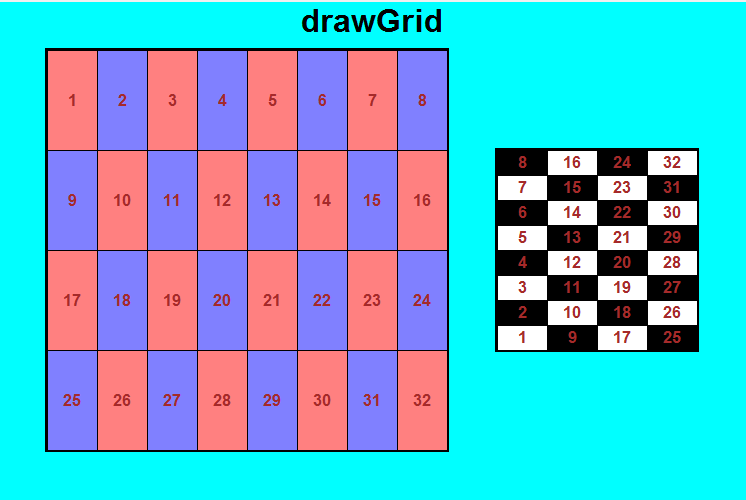CMU 15-112: Fundamentals of Programming and Computer Science
Extra Practice for Unit 2 (Due never)
- These problems will help you prepare for hw2 and quiz2. They are optional and you are encouraged to collaborate when working on them.
- You may also wish to see extra-practice2-ct-and-roc.html.
- To start:
- Create a folder named 'unit2'
- Download both extra_practice2.py and cs112_s20_unit2_linter.py to that folder. Note that some of the problems listed below are not included in that starter file.
- Edit extra_practice2.py
- Do not use string indexing, lists, list indexing, or recursion in this unit.
- Do not hardcode the test cases in your solutions.
- longestDigitRun(n)
Write the function longestDigitRun(n) that takes a possibly-negative int value n and returns the digit that has the longest consecutive run, or the smallest such digit if there is a tie. So, longestDigitRun(117773732) returns 7 (because there is a run of 3 consecutive 7's), as does longestDigitRun(-677886). - nthLeftTruncatablePrime(n)
Write the function nthLeftTruncatablePrime(n). See here for details. So nthLeftTruncatablePrime(0) returns 2, and nthLeftTruncatablePrime(10) returns 53. - Happy Primes
Background: read the first paragraph from the Wikipedia page on happy numbers. After some thought, we see that no matter what number we start with, when we keep replacing the number by the sum of the squares of its digits, we'll always either arrive at 4 (unhappy) or at 1 (happy). With that in mind, we want to write the function nthHappyNumber(n). However, to write that function, we'll first need to write isHappyNumber(n) (right?). And to write that function, we'll first need to write sumOfSquaresOfDigits(n). And that's top-down design! Here we go....
Note: the autograder will grade each of the following functions, so they are required. However, they also are here specifically because they are just the right helper functions to make nthHappyNumber(n) easier to write!- sumOfSquaresOfDigits(n)
Write the function sumOfSquaresOfDigits(n) which takes a non-negative integer and returns the sum of the squares of its digits. Here are some test assertions for you (note that in the hw2.py starter file, instead of assert, these use assertEqual):assert(sumOfSquaresOfDigits(5) == 25) # 5**2 = 25 assert(sumOfSquaresOfDigits(12) == 5) # 1**2 + 2**2 = 1+4 = 5 assert(sumOfSquaresOfDigits(234) == 29) # 2**2 + 3**2 + 4**2 = 4 + 9 + 16 = 29
- isHappyNumber(n)
Write the function isHappyNumber(n) which takes a possibly-negative integer and returns True if it is happy and False otherwise. Note that all numbers less than 1 are not happy. Here are some test assertions for you:assert(isHappyNumber(-7) == False) assert(isHappyNumber(1) == True) assert(isHappyNumber(2) == False) assert(isHappyNumber(97) == True) assert(isHappyNumber(98) == False) assert(isHappyNumber(404) == True) assert(isHappyNumber(405) == False)
- nthHappyNumber(n)
Write the function nthHappyNumber(n) which takes a non-negative integer and returns the nth happy number (where the 0th happy number is 1). Here are some test assertions for you:assert(nthHappyNumber(0) == 1) assert(nthHappyNumber(1) == 7) assert(nthHappyNumber(2) == 10) assert(nthHappyNumber(3) == 13) assert(nthHappyNumber(4) == 19) assert(nthHappyNumber(5) == 23) assert(nthHappyNumber(6) == 28) assert(nthHappyNumber(7) == 31)
- nthHappyPrime(n)
A happy prime is a number that is both happy and prime. Write the function nthHappyPrime(n) which takes a non-negative integer and returns the nth happy prime number (where the 0th happy prime number is 7).
- sumOfSquaresOfDigits(n)
- nthPowerfulNumber(n)
Write the function nthPowerfulNumber(n). See here for details. So nthPowerfulNumber(0) returns 1, and nthPowerfulNumber(10) returns 64. - countingPrimes
Do the "Counting Primes" problem here. - nthPerfectNumber(n)
Write the function nthPerfectNumber(n) that takes a non-negative integer n and returns the nth perfect number, starting at n=0, where a number is perfect if it is the sum of its positive divisors less than itself. For example, 6 is perfect because 6 = 1 + 2 + 3. Also, 28 is perfect because 28 = 1 + 2 + 4 + 7 + 14. The next one is 496, then 8128. For full credit, you need to use a faster version, which uses the same observation that sped up isPrime, so that you only have to search for factors up to the square root of n. - longestDigitRun(n)
Write the function longestDigitRun(n) that takes a possibly-negative int value n and returns the digit that has the longest consecutive run, or the smallest such digit if there is a tie. So, longestDigitRun(117773732) returns 7 (because there is a run of 3 consecutive 7's), as does longestDigitRun(-677886). - longestIncreasingRun(n)
Write the function longestIncreasingRun that takes in a positive int value n and returns the longest increasing run of digits. For example longestIncreasingRun(1232) would return 123 and longestIncreasingRun(27648923679) returns 23679. If there is a tie in run length, the larger of the two runs should be returned. So longestIncreasingRun(123345) would return 345. -
And More!
You can find even more loops-and-conditional problems here.
Graphics








